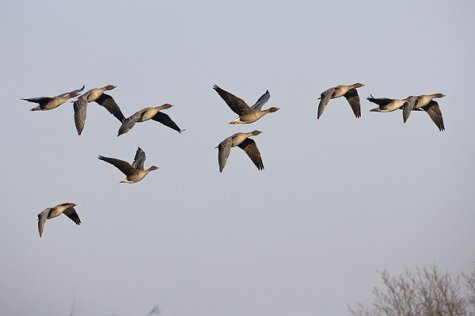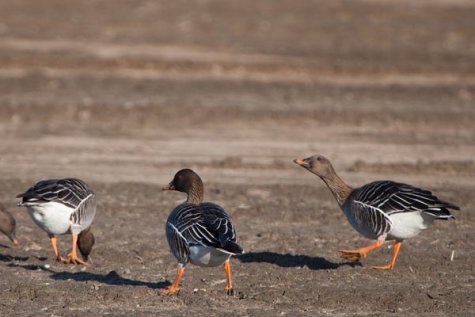Passing migrants – big dark geese
Photos Arne Ader
Translation Liis
Bean geese
Bean goose Rabahani Anser fabalis
Greylag geese, who do nest in Estonia, are large too, but the majority of them are already here, having arrived in small groups or even in pairs. In Estonia 600 pairs or more breed, thus not particularly numerous.
Bean geese don’t nest here (their nesting territory starts at the Finnish bogs and stretches northwards from there) but during the spring migration in March-April tens of thousands have a migration stopover in Estonia. In flight view we see the characteristic ”goose triangle” but sometimes they fly in a long “queue” after each other.
Compared to greylag geese the flight image of bean geese leaves a dark impression: brown head and neck, greyish-brown but sometimes completely brown wings with lighter patches (the entire leading edge of the wings of grey geese is light-coloured), underparts greyish brown. Body length about 80 centimetres, wingspan up to twice as much and weight around 3 kilos.
If you notice a goose flock busy in a field a good identification characteristic is the beak – it is rather long, orange in the centre, but the base and tip are black (see Arne’s photo, and you will ”get the picture”). Iris of the eye is dark brown, legs prettily orange.
Together with the bean geese, individuals of the subspecies fabalis and rossicus also pass Estonia but those we will rather leave to the experts.
Good observation areas are the Audru, Sangla, Aardla and Räpina polders, also the lakes of Vooremaa and the Matsalu National Park and Silma protection area
Bean goose observations: LINK
Bean geese
White-fronted geese must also be introduced soon.










